Pelagic birdwatching in Peru
I have arranged pelagics in Lima since 2000. We usually run around 10-12 pelagics per year. Sometimes, we do special trips to look for cetaceans, but more often we encounter whales or dolphins regularly on our birding pelagics (see this recent whale-watching blogpost).
Since 2014, we now use a larger and faster speed boat for groups of 9-20 people which has no problem reaching the deep water within the 6-7 hours we stay at sea.
Which are the 20 best birds of Lima pelagics? The first 10 are presented here. The next 10 will be presented in a future blogpost. Which species are you missing? Have you done a pelagic with us? Which species were your favorites? Do you have pictures to publish here on the blog or on the Kolibri Facebook Page?
The top 10 best pelagic birds of Lima.
1.Ringed Storm-Petrel Oceanodroma hornbyi
The Ringed Storm-Petrel or Hornby’s Storm-Petrel as it is also known is perhaps the most wanted of all the seabirds in Lima. It is very difficult to see in coastal waters, although we have struck lucky sometimes on shorter trips. One usually needs to go all the way to the continental shelf some 30 nmiles out. It is a large powerful Storm-Petrel which gets interested in the chum, but usually just makes a few turns and keeps a distance. No breeding area of the Ringed Storm-Petrel is known. It may well nest inland. Individuals have been found at 3800 meters in the Cordillera Blanca in Ancash department.
2 Markham’s Storm-Petrel Oceanodroma markhami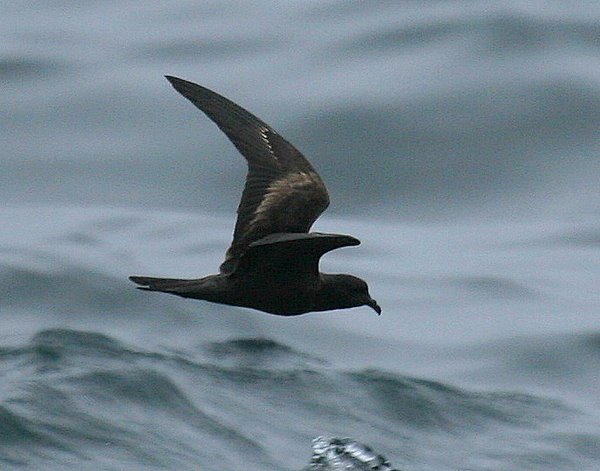
Markham’s Storm-Petrel is the other Stormy high on the birders wishlist. It is also a powerful Oceanodroma. Blackish brown in color with a broad and usually quite prominent carpal bar. It often comes to the chum, but seldom as close as for instance White-vented Storm-Petrel below.
It is also usually found in deep water quite a ways out. Having said that we were lucky two see one recently on July 13 on a mini-pelagic to only 15 nmiles.
3. Peruvian Diving Petrel Pelicanoides garnotii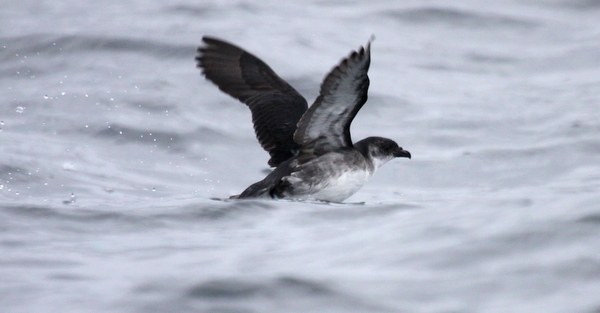
The Peruvian Diving-Petrel is numerous off San Lorenzo island (the large island you see in front of La Punta, Callao). It is a strange bird looking very much like a little auklet both in appearance, flight and behaviour. It takes off on the water with very rapid wingbeats – or makes a dive to get away from the boat.
4. Waved Albatross Phoebastria irrorata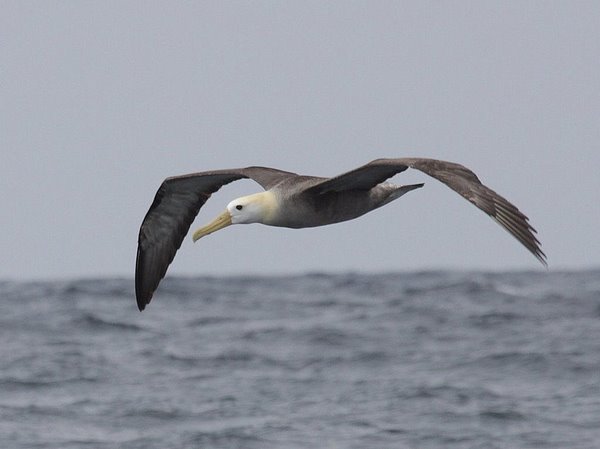
Although, as you probably know, Waved Albatross principally breeds on Galapagos, you can almost always find this magnificent looking albatross in Peruvian Waters. Adults often take sabbatical years from breeding and young may stay around the rich peruvian waters longer. We often see them also on our recent short pelagics.
The Waved Albatross is Critically endangered according to Birdlife International. Main threats seem to be bycatch in fishing procedures and direct hunting by fishermen at sea. According to one captain on a fishing boat in Northern Peru they “taste good“.
5. Inca Tern Larosterna inca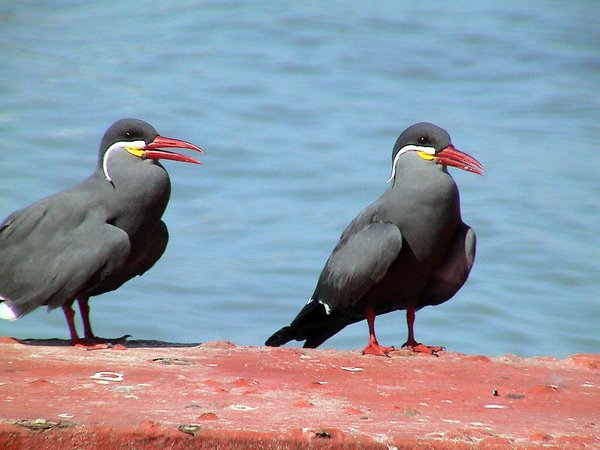
The prettiest tern of the world no doubt, the Inca Tern is easy to see well and one can see them even at the port at close range. It is by no means uncommon, but since it is such a popular and photogenic bird, it just has to be among the top 10 – don’t you agree?
6. Swallow-tailed Gull Creagrus furcatus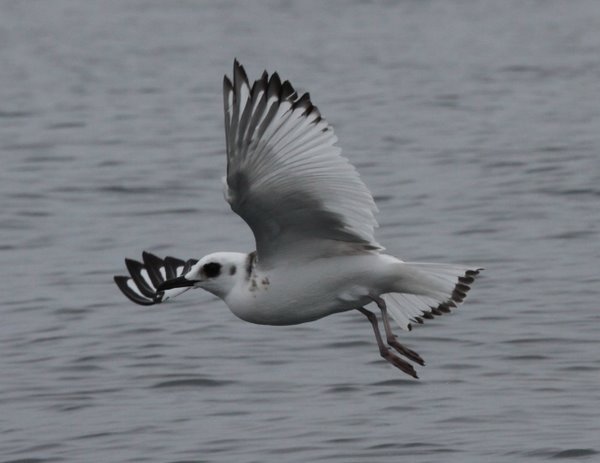
Another visitor from the Galapagos that can be seen almost all year around in small numbers. The pattern is like a giant Sabine’s Gull. The immature and the adult in non-breeding adult have a black goggle around the eye that gives it away. The Swallow-tailed Gull is active at night feeding on crustaceans, why we often find groups of birds sitting on the sea.
7. Chatham Albatross Thalassarche eremita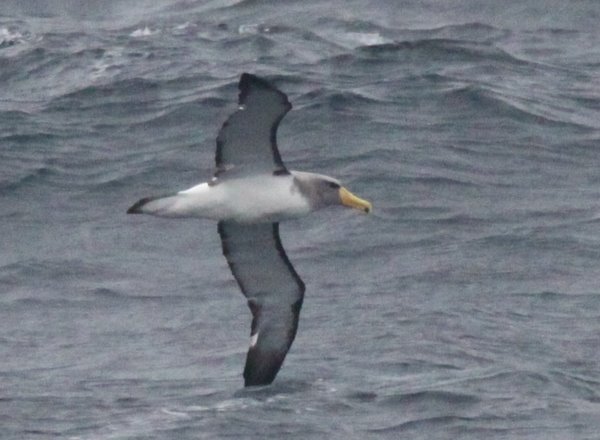
There are now five records from our Lima pelagics of the formerly Critically Endangered Chatham Albatross. Recently it was downgraded to Vulnerable, but still with a small range only breeding on The Pyramid, a large rock stack in the Chatham Islands, New Zealand, it is a darn good bird to see in Peru. We have seen both adults and young birds. Best time of year to see one in Peru is between May and August. Sorry about the crappy photo. It is the only one I have got.
8. Northern Giant Petrel Macronected halli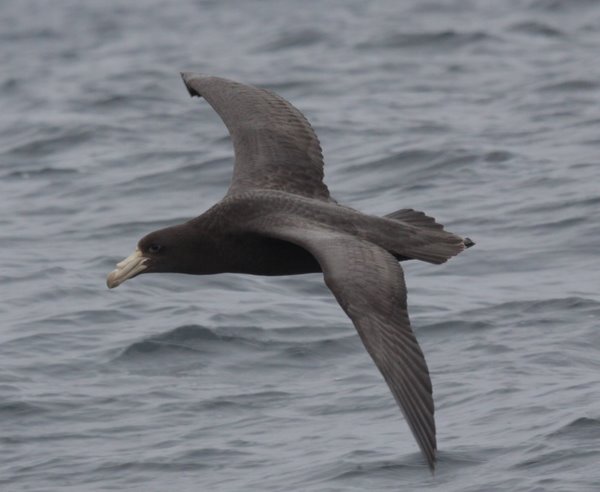
The Northern Giant Petrel was according to older literature hypothetical in Peru. It turns out it is actually as regular, or maybe even more regular than the Southern Giant Petrel. We see all dark immature with pink-tipped bills yearly and often relatively near the coast. Our records from 2002-2007 are summarized in this paper in Marine Ornithology journal.
9. South Polar Skua Stercorarius maccormicki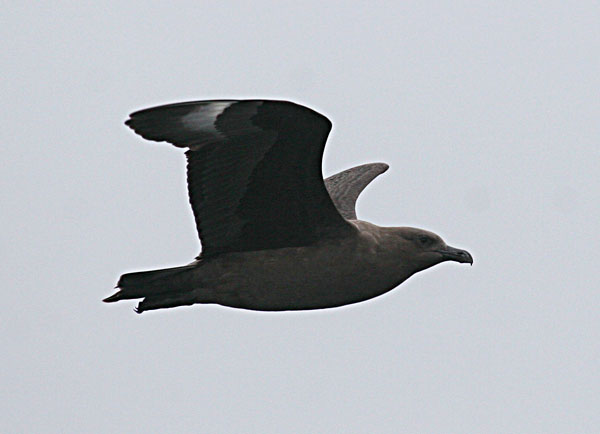
South Polar Skua is less common than Chilean Skua, although through the years we have seen it between April to November. It is slenderer, much darker and with a smaller bill, than Chilean Skua.
10. White-vented Storm-Petrel Oceanites gracilis
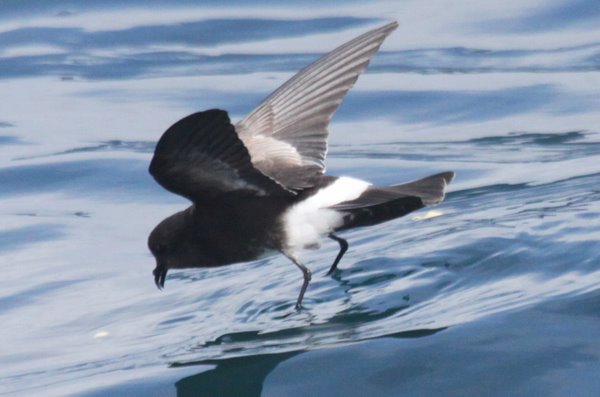 White-vented Storm-Petrel is the most common Storm-Petrel off the Peruvian coast, yet it is one of my favorites. They are very fragile – a small Storm-Petrel that trips on water. They are always the first tubenoses that come to the chum. Yet, they are not easy to separate from Wilson’s Storm-Petrel – or the other way around as Wilson’s Storm-Petrel is much rarer. If the diagnostic white belly is not seen, the best feature is the light butterfly-like flight with rapids wingbeats. Wilson’s Storm-Petrel is steadier in flight.
White-vented Storm-Petrel is the most common Storm-Petrel off the Peruvian coast, yet it is one of my favorites. They are very fragile – a small Storm-Petrel that trips on water. They are always the first tubenoses that come to the chum. Yet, they are not easy to separate from Wilson’s Storm-Petrel – or the other way around as Wilson’s Storm-Petrel is much rarer. If the diagnostic white belly is not seen, the best feature is the light butterfly-like flight with rapids wingbeats. Wilson’s Storm-Petrel is steadier in flight.
Tours for pelagic lovers.
Now you know what is awaiting you when you come to Peru and do pelagics with us. And don’t just take my word for it.
The importance of Lima as a destination for seabirders is evident. See what other pelagic experts have to say.
Steve N. G. Howell, author and tour leader with various book such as Birds of Mexico, Gulls of the Americas and Petrels, Albatrosses, and Storm-Petrels of North America argues:
Lima is one of the best areas for pelagic birding in the Americas, with access to several species that can’t be seen easily anywhere else. Keeping pelagic trips going here is important both for birders and for gathering data on the seasonal distribution and abundance of numerous species, some of which are globally threatened.
Hadoram Shirihai, photographer and author of various books such as Whales, Dolphins and other Marine Mammals of the World and The complete guide to Antarctic Wildlife says:
Lima is a unique seabird pelagic hotspot for me. The pelagic off Lima with Kolibri Expeditions is one of the best that I tested for the work towards the Handbook of the Tubenoses of the World project, and I call to anyone to support Gunnar to continue the good work he has been doing for years.
Also Peter Harrison, ground breaking pelagic guru, who was in Lima on August 9, 2011 for a short pelagic with us:
The continuation of pelagic voyages from Lima is critically important to further our knowledge of seabird biology and distribution along this important avian flyway. Gunnar’s reputation is well-known and he has added much to our knowledge and provided great service for passing ornithologists and birdwatchers over the years. It is perhaps significant that when the author of Seabirds of the World: An Identification Guide
wanted a pelagic trip from Lima, Kolibri Expeditions and Gunnar Engblom was the outfitter he contacted.
Visit Kolibri Expeditions Pelagic webpage and book your pelagic tour with us. If you don’t find a suitable date in the calendar, please suggest a date and we shall try to set something up for your party. Finally, what other Peruvian seabirds would you like to see in a follow-up to this post?

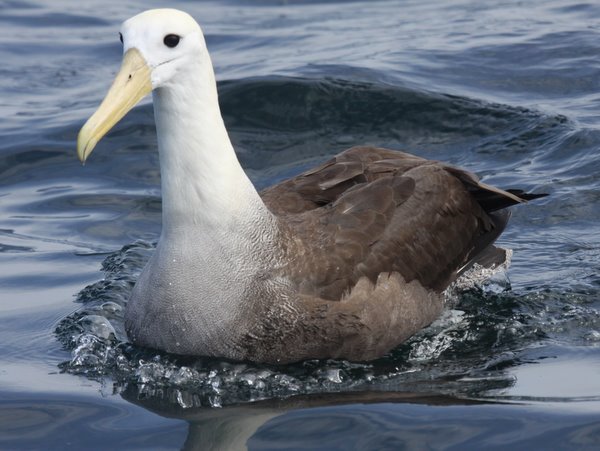
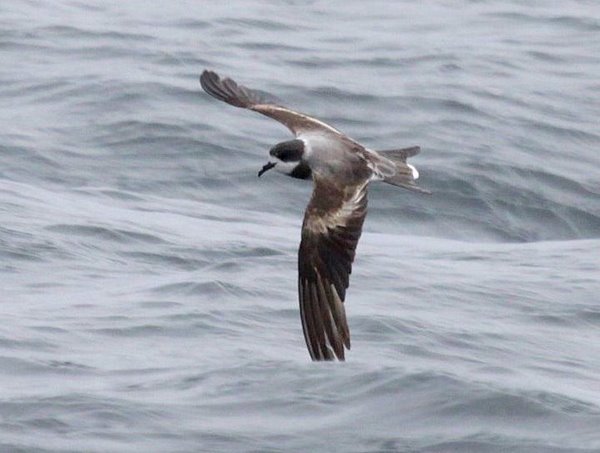
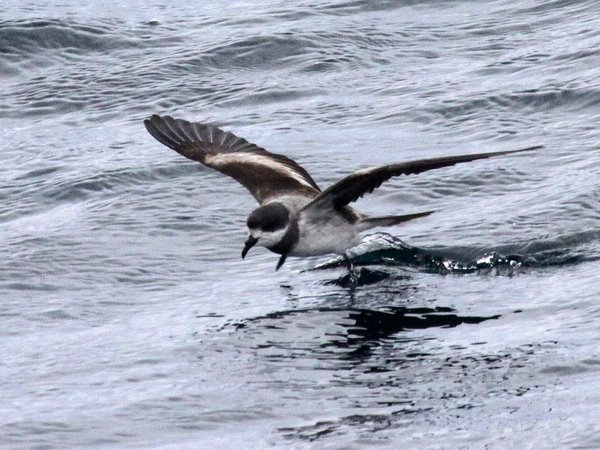
A nice collection of Pelagic observations and fotos! Will be looking forward to participate in a next one soon! Great work Gunnar!
Thanks for the kind words Jan. Lookign forward to see you in Lima. Will you be at the Birdfair?